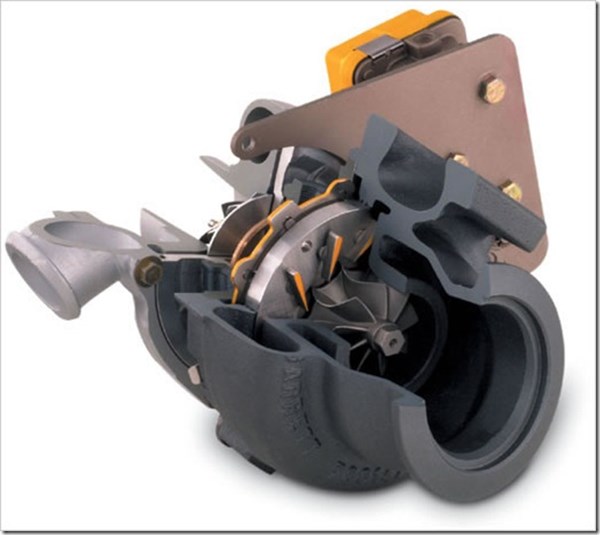Honeywell Projects Turbocharged Growth
Anyone who has driven a turbocharged car is probably familiar with the “turbo-lag” phenomenon.
Anyone who has driven a turbocharged car is probably familiar with the “turbo-lag” phenomenon. Essentially, you’re into the throttle and then there is hesitation as a sufficient amount of boost is generated, and then—zooooooooooooooom!
And in some regards, there seems to have been a bit of turbo lag as it relates to the implementation of turbochargers in vehicles, and we’re now in the zooooooooooooooom! portion of the ride.
Featured Content

Honeywell GT17 VNT turbocharger
According to a study by Honeywell Transportation Systems, while turbochargers were on 20-million new vehicles sold globally in 2011—or 25% of the number sold—by 2017, turbos will be on 36-million passenger cars, or about 40%.
Explained Peter Hill, Honeywell Transportation Systems vp of Marketing and Product Management, “Turbochargers offer a combination of fuel-savings and performance at an affordable price compared to other technologies, making them an attractive option on subcompact cars, full-size luxury sedans, pick-up trucks and everything in between.”
In Europe, where gas prices have been comparatively high for quite a while and where taxes on engine size have been higher, turbochargers are a matter of course: in 2011, 67% of the cars sold in Europe had them; the number that Honeywell projects is +85% by 2017.
In the U.S.? Going to about 25% of all light duty vehicles by 2017, to about 6.7-million units, which is still a fraction of the 17.4-million turbocharged vehicles expected for Europe in 2017.


.jpg;width=70;height=70;mode=crop)
















